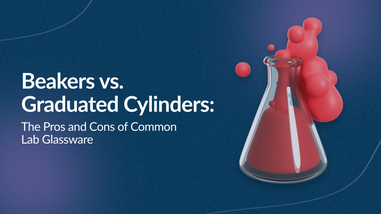- No products in the cart.
What are laboratory ovens used for?
Laboratory ovens are ovens used to produce controlled temperature heating environments for sterilizing, curing, and evaporating laboratory functions. Laboratory ovens are generally different from regular drying ovens, where drying ovens pull in fresh air from the outside, most lab ovens recirculate the same air inside the unit and serve specific functions. Lab ovens are considered standard equipment and can be found in most clinical and research laboratories.
What to consider when looking for a laboratory oven:
Laboratory ovens come in different varieties. Some of these include fine ovens, vacuum, inert gas, and cleanroom ovens. Each type best serves different purposes. Knowing the needed temperature range and specific features are essential when deciding which type of oven best suits the intended application. Ovens also come in various sizes. Some laboratory ovens are industrial size and are quite large, while others can be freestanding, portable, or “benchtop”.

Airflow patterns are also important factors when choosing a laboratory oven. Airflow is an important factor in temperature uniformity. There are two main ways that air can travel through an oven: horizontal airflow and vertical airflow. In ovens with horizontal airflow, the air is pushed from holes on the side of the chamber and collected in bigger holes on the other side. This type of airflow is beneficial for oven types with horizontal trays or tiers. Vertical airflow is where heated air comes from the bottom and is pushed upward. These types of ovens are ideal for drying products.
Laboratory Oven Safety
Aspects of using laboratory ovens as well as the components themselves can pose a risk to the operator. Exercising proper safety practices and methods can limit injuries and accidents and promote the safe future use of the machines. Before operating any laboratory oven, check to ensure that it is in proper working condition, away from any other potential hazards, and that all devices and sensing mechanisms are operational. Laboratory ovens can pose risks such as fire hazards to the surrounding environment and health and burn hazards to those using them.
Any individual operating the lab oven should wear appropriate PPE including long sleeves, heat resistant sleeve protectors/gloves, and eye and face protection. Some ovens come equipped with safety features like abnormal temperature sensing, automatic overheating prevention, heater disconnection, and lock-style door switches. Always be sure to use proper materials in and around the ovens, including heat and temperature-safe glassware. Do not use plastic materials near or inside an oven. Only put items and products that have been properly cleaned, as leftover residue may ignite a fire.
Laboratory Fine Ovens
Fine ovens use forced convection for horizontal airflow patterns and can cool down quickly. These ovens have fast and high airflow volume. Fine ovens typically come with straightforward settings for various temperature tests that would otherwise require complicated programming.
Laboratory Vacuum Ovens
These ovens are necessary for performing controlled experiments where the samples’ moisture needs to be removed or must be kept at a certain temperature. Vacuum ovens are commonly used for gently drying processes, however, they can be very versatile. These ovens use low pressure to minimize oxidation during drying and can be used for delicate drying needs like removing flammable liquids. These types of ovens can come with specialized features like computer interface and controls, and can even be set to prevent over-drying.
Laboratory Inert Gas Ovens
Inert gas ovens are used when oxygen needs to be prevented from corroding or interfering with the product. Inert gas ovens will hold the product in a pressurized inert gas to protect them from oxidation. These ovens will remove oxygen molecules from the chamber and replace them with non-flammable gases like Nitrogen, but can also use Argon, Carbon Dioxide, and Helium. Inert gas ovens are typically used for curing and annealing processes.
Laboratory Cleanroom Ovens
Cleanroom ovens provide the ideal environment for eliminating pollutants from coming into contact with your product. Cleanroom ovens are often found in pharmaceutical manufacturing industries and laboratories. These ovens remove any environmental or air pollutants like vapors, dust, or microbes that could potentially interfere with the sterile process. Cleanroom ovens can dry, dehydrogenate, and even sterilize products. Cleanroom ovens can apply HEPA filters on the air, circulation, and exhaust path.
Overview:
Fine Oven
Best for quick, general heating.
Vacuum Oven
Best for product drying, moisture determination, and chemical resistance.
Inert Gas Oven:
Best for removing oxygen from the heating process to avoid corrosion. Used by any industry that requires a controlled atmosphere environment for curing or treating.
Cleanroom ovens:
Best for eliminating pollutant particulates. Often used in the medical and pharmaceutical industry.
Day-to-day applications and facility needs are major considerations when choosing an oven that adequately provides for your facility’s needs. Quality laboratory ovens are crucial to ensuring samples and products maintain the required temperature throughout testing and heating procedures. Lab Pro Inc. offers a wide selection of laboratory ovens from Yamato Scientific, a leader in innovative laboratory oven design and manufacturing for over one hundred.
For over 40 years, Lab Pro Inc. has been committed to delivering the highest quality lab equipment such as natural and forced convection ovens, lab supplies, chemicals, and cleanroom PPE apparel to medical device and electronic manufacturing laboratories worldwide. To learn more, visit the biggest Lab Supply showroom in California, or contact us online or at 888-452-2776.




















































Great blog on Laboratory Oven! I read your blog and i found this very informative as it explains in detail, what factors we should consider while choosing laboratory ovens. I also read blog by Patel Heaters & Control Pvt. Ltd., they have also explained these factors very well.
Website: www.patelheaters.com